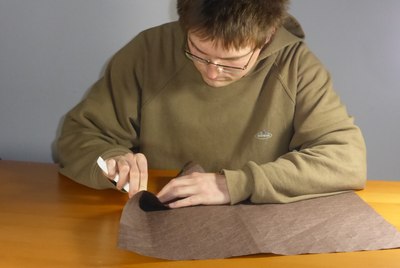Growing Up as an Origamist

I’ve been doing lots of origami lately, but very little folding. Between cataloging and reverse-engineering Shuzo Fujimoto’s designs, diagramming my own models, preparing and giving workshops, writing blog posts, and managing the ever-increasing pile of prototypes, I find it hard to find time for actually folding my designs much. Fujimoto’s recent death anniversary reminded me that the year he died, 2015, was also the year I got into tessellations and when my origami design skills really took off.
So, I’ve been seriously engaged in origami for the last seven years (and on and off for thirty), and notice how much the notion of “doing origami” has changed for me over time. This should come as no surprise as the same has happened in my professional life: with growing experience, I’ve been spending more and more time planning and managing other peoples’ work, finding out what needs to be done, and teaching, rather than just doing stuff.
Is that a bad thing? Not necessarily. I choose what I want to work on, especially when it comes to origami which is just a hobby and exerts no pressure on me other than my own ambition. Many of the things I’ve been doing recently, I would simply not have been able to do a few years ago. Spending an additional hour on documenting Fujimoto’s legacy or ranting about origami classification are, I believe, more impactful than pre-creasing yet another grid.
Since time is always scarce, and the number of ideas for origami models I have doesn’t get any smaller, getting more involved in origami other than folding has forced me to become more deliberate about choosing which designs I do fold and which end up in the prototype pile. Reality is, I’m now able to make neat folds of maybe a few percent of my designs. I’m still not completely satisfied with the criteria of choice I apply in practice. In theory, I would prefer to fold just the best designs. In practice, quite often I find I have just a bit of time, and decide to fold something quick and undemanding rather than work on the more ambitious projects. Such lack of discipline is not necessarily bad, though, since my initial judgement of a design is not always consistent with what I think of it once it’s finished or with how others perceive it. Once in a while I fold something I thought would be great, only to find it much less satisfying than expected once it’s ready. On the other hand, some underappreciated ideas end up surprisingly good once executed. Allowing myself this kind of exploration by trial and error helps me stay humble and keeps the process fun.
I’m wondering whether other origami designers’ experiences are similar? Do you also find yourself doing other things than you used to? Origami is an interesting field since it has both an artistic and an engineering component to it. My hunch is the engineering element is much more prone to shifting creators’ priorities over time, e.g. moving more towards teaching others, while the artistic component probably changes less since it’s grounded more in working with your own hands. If you’d like to share your own experiences, please feel free to comment below. I’d also be very interested to hear not only from origamists, but also people active in other fields which combine art and engineering.
Comments